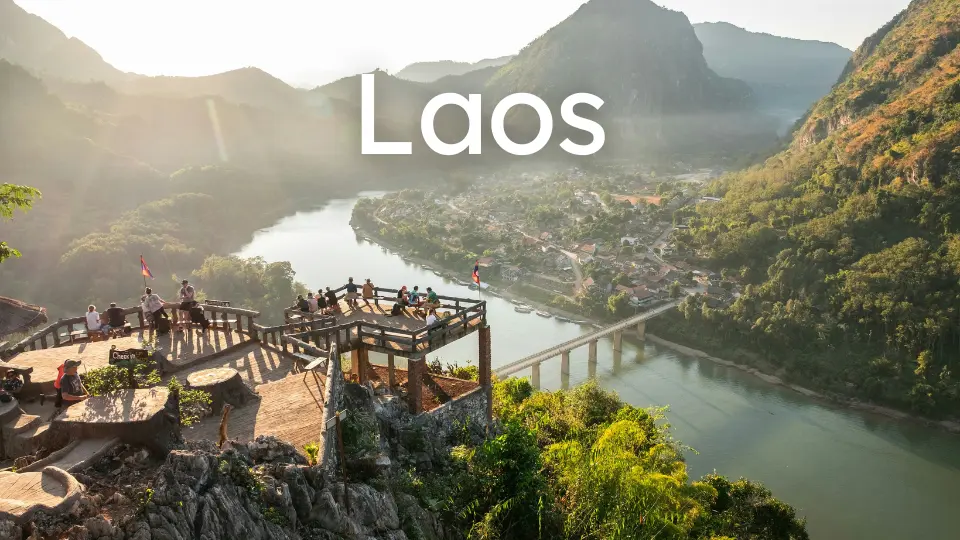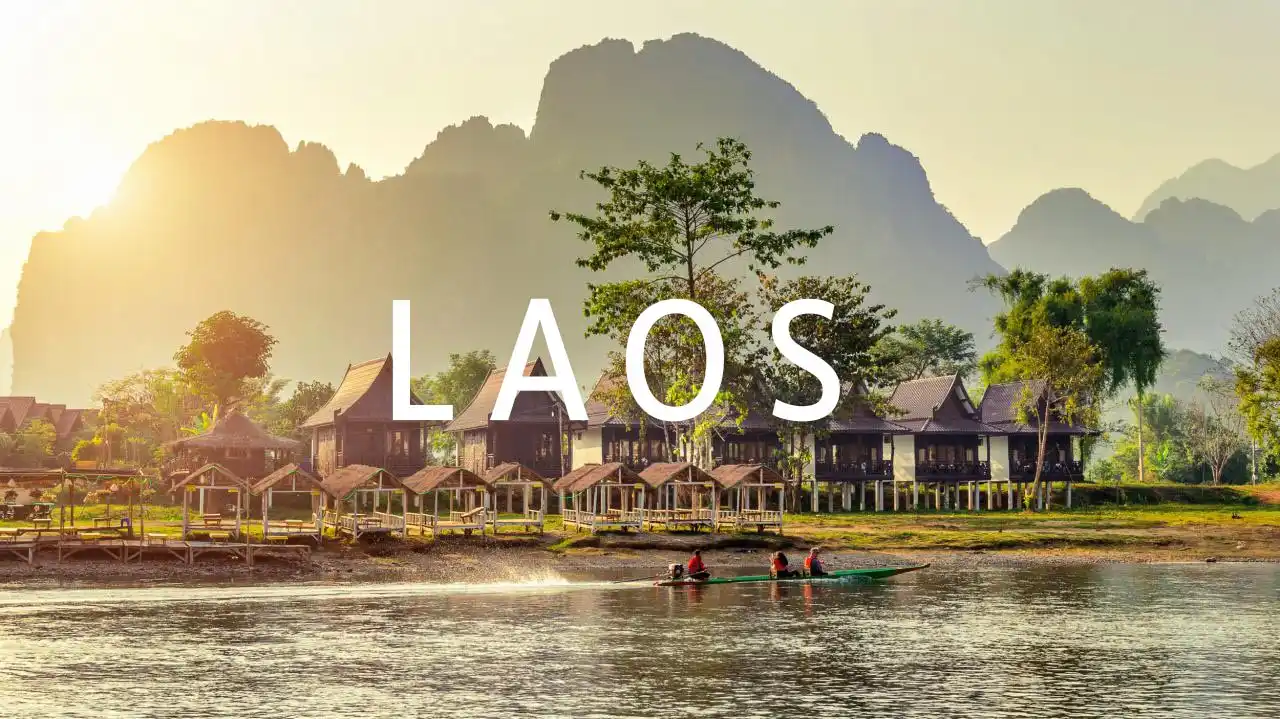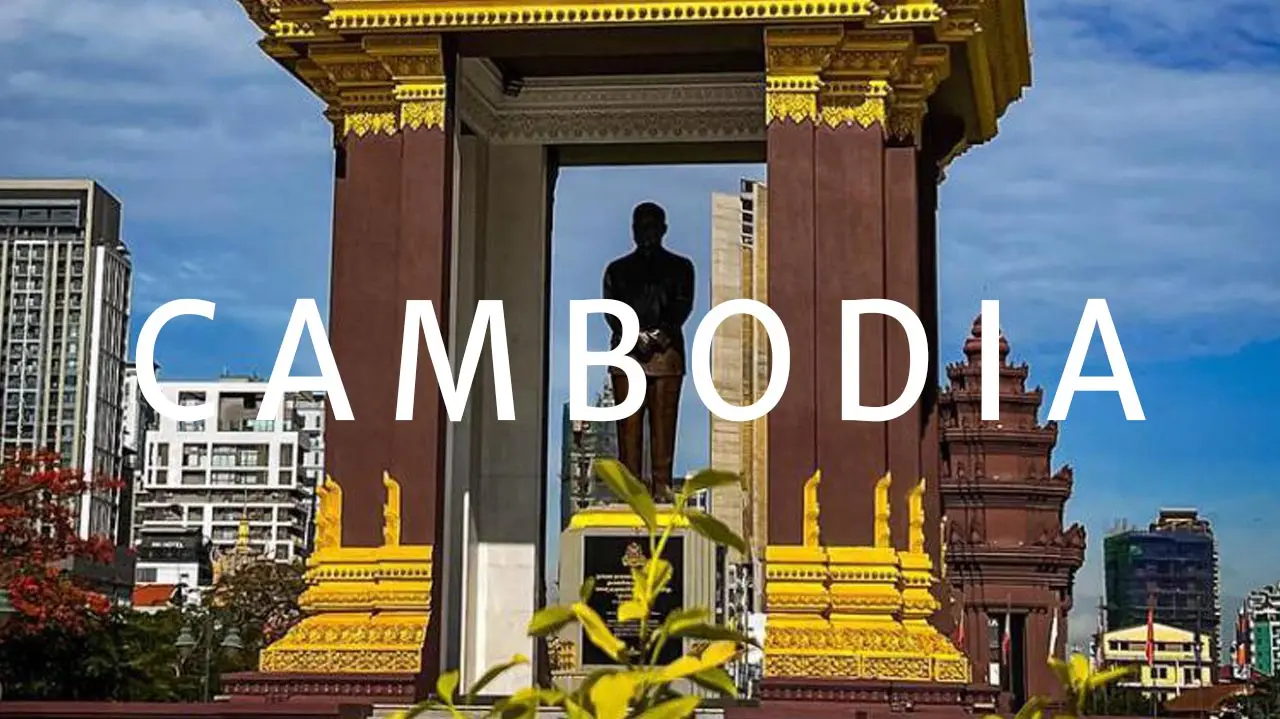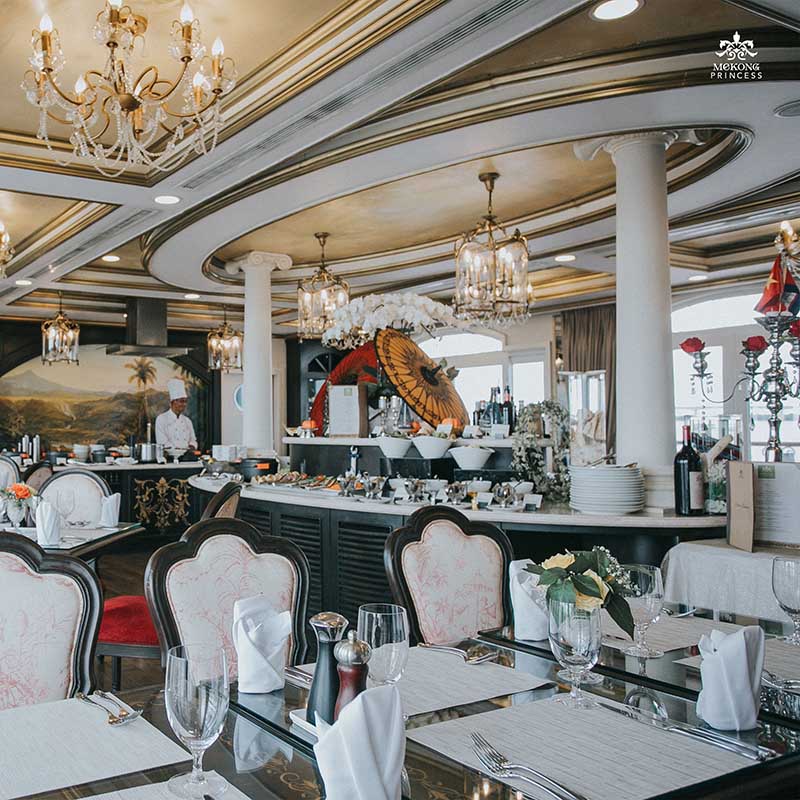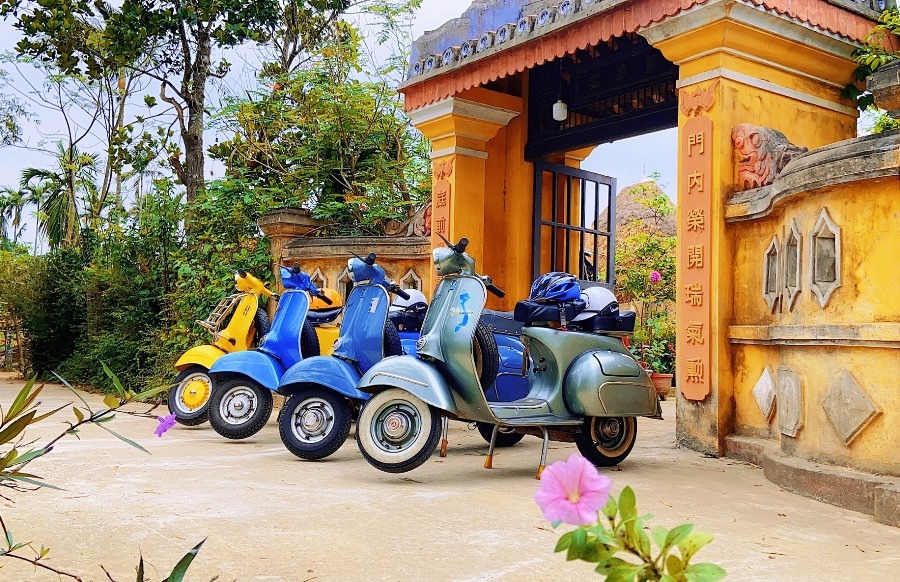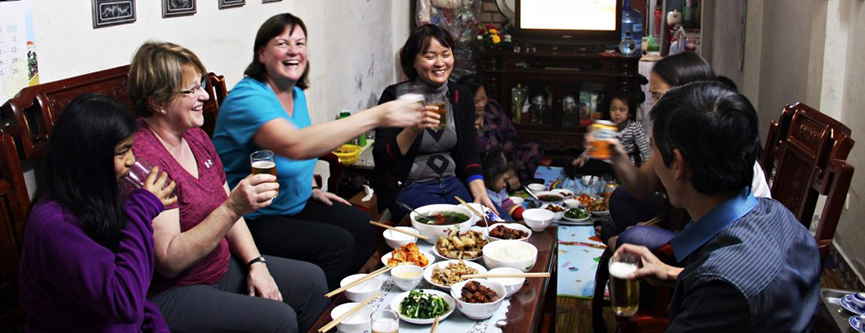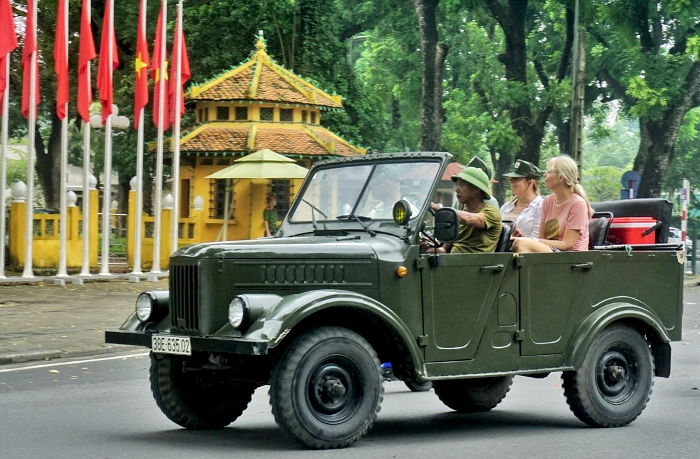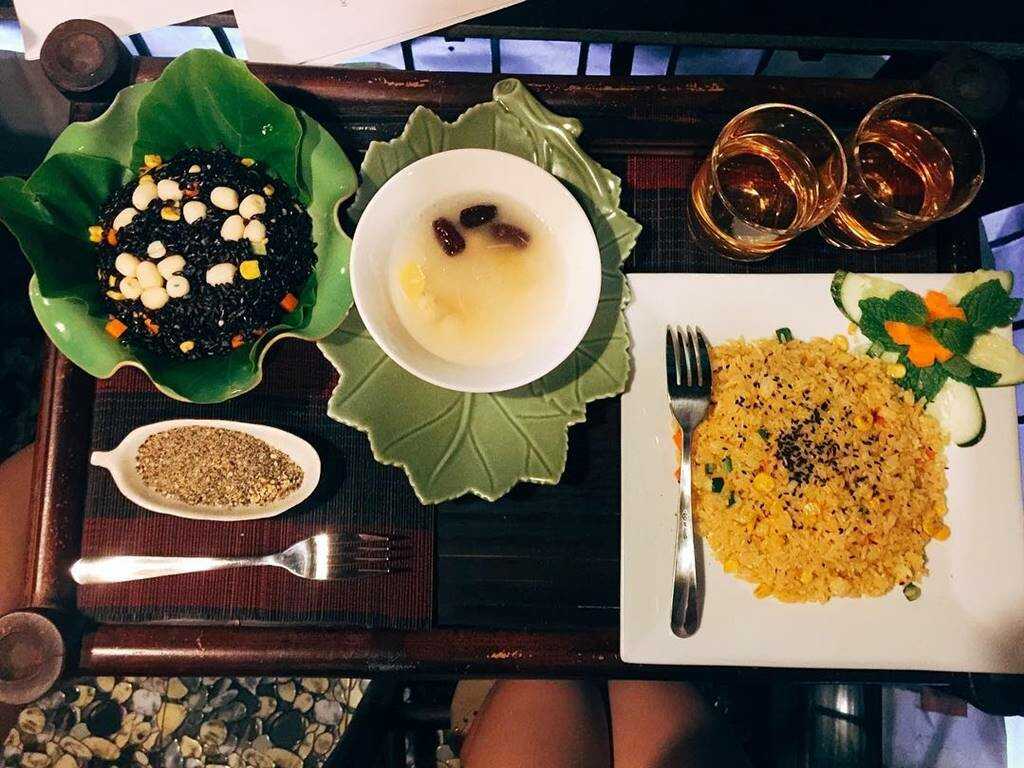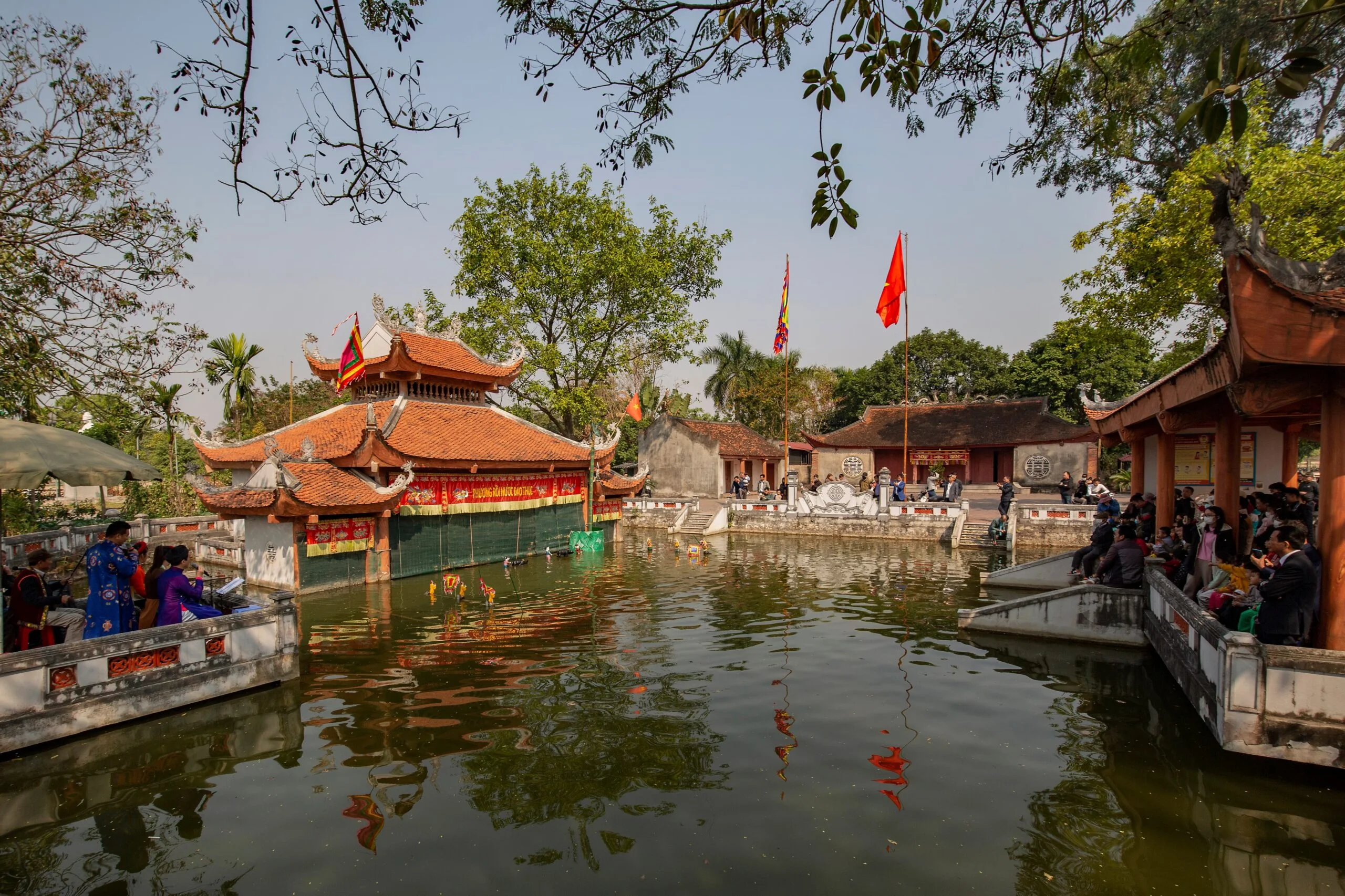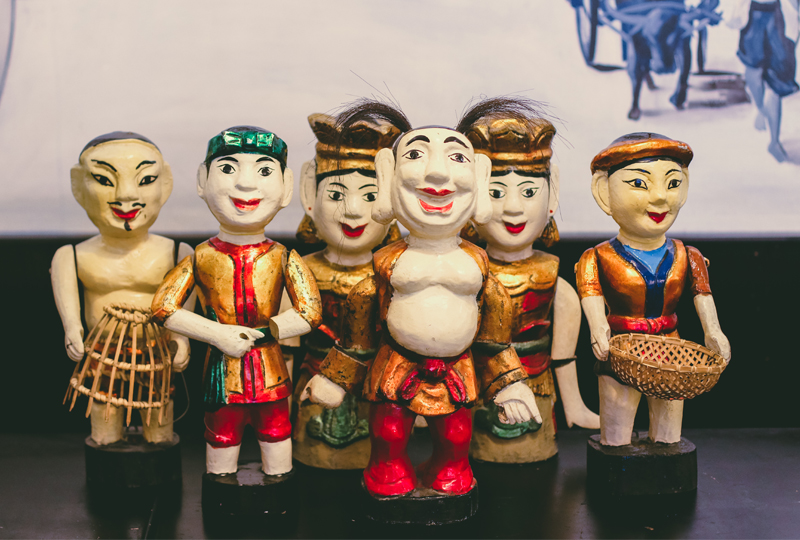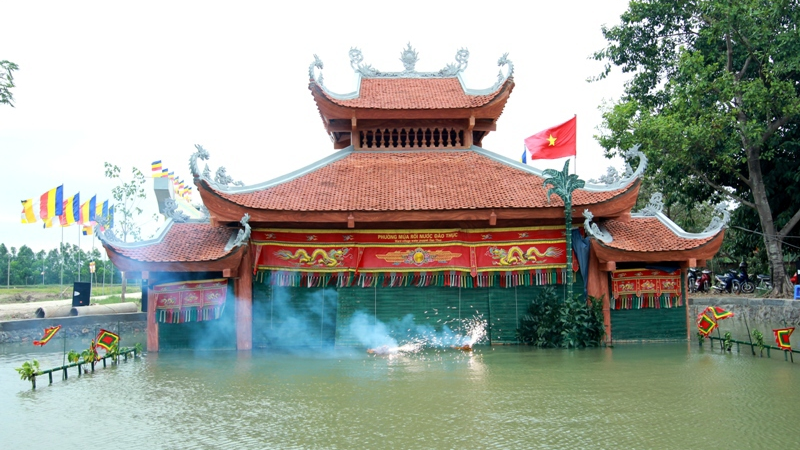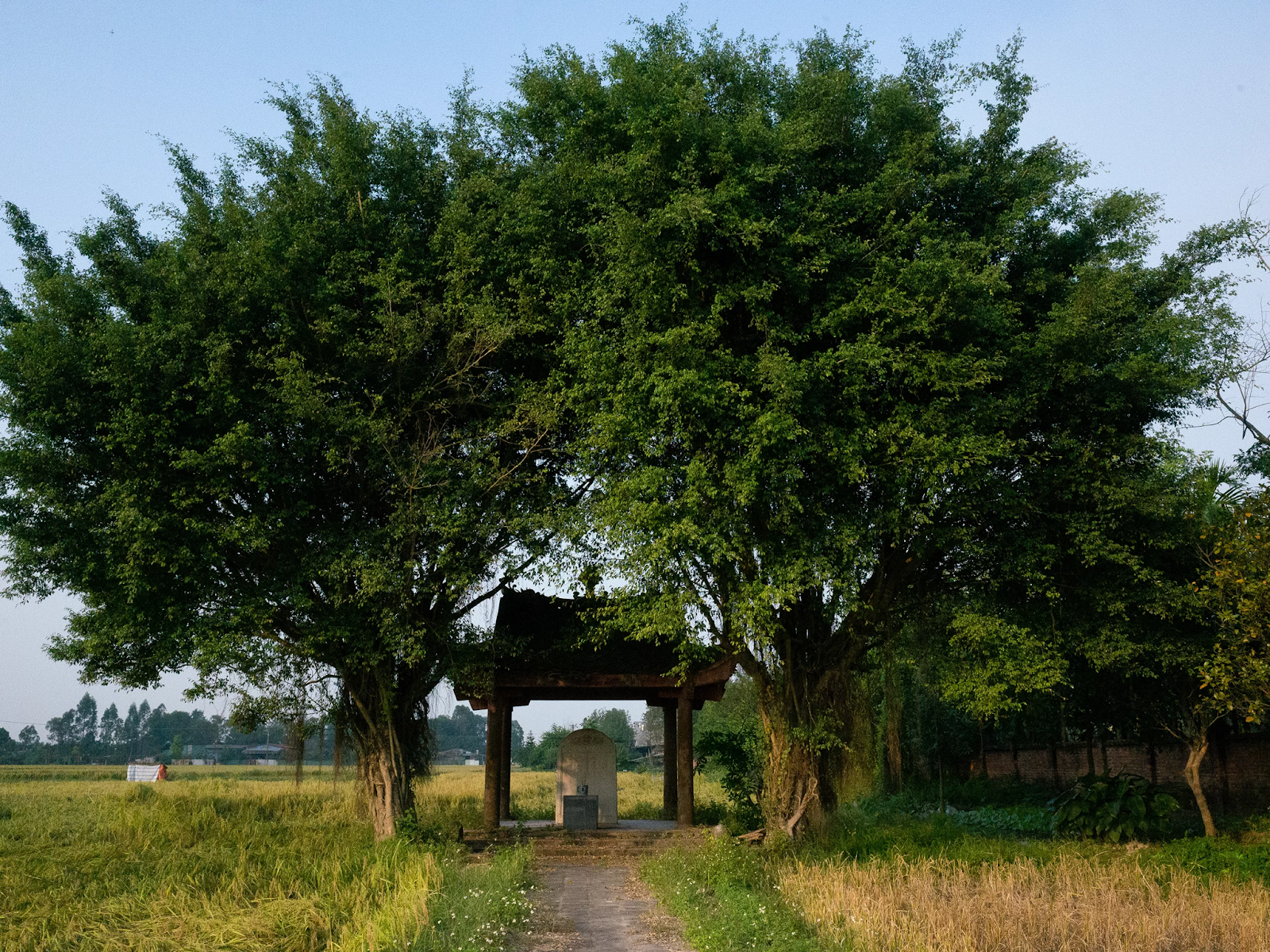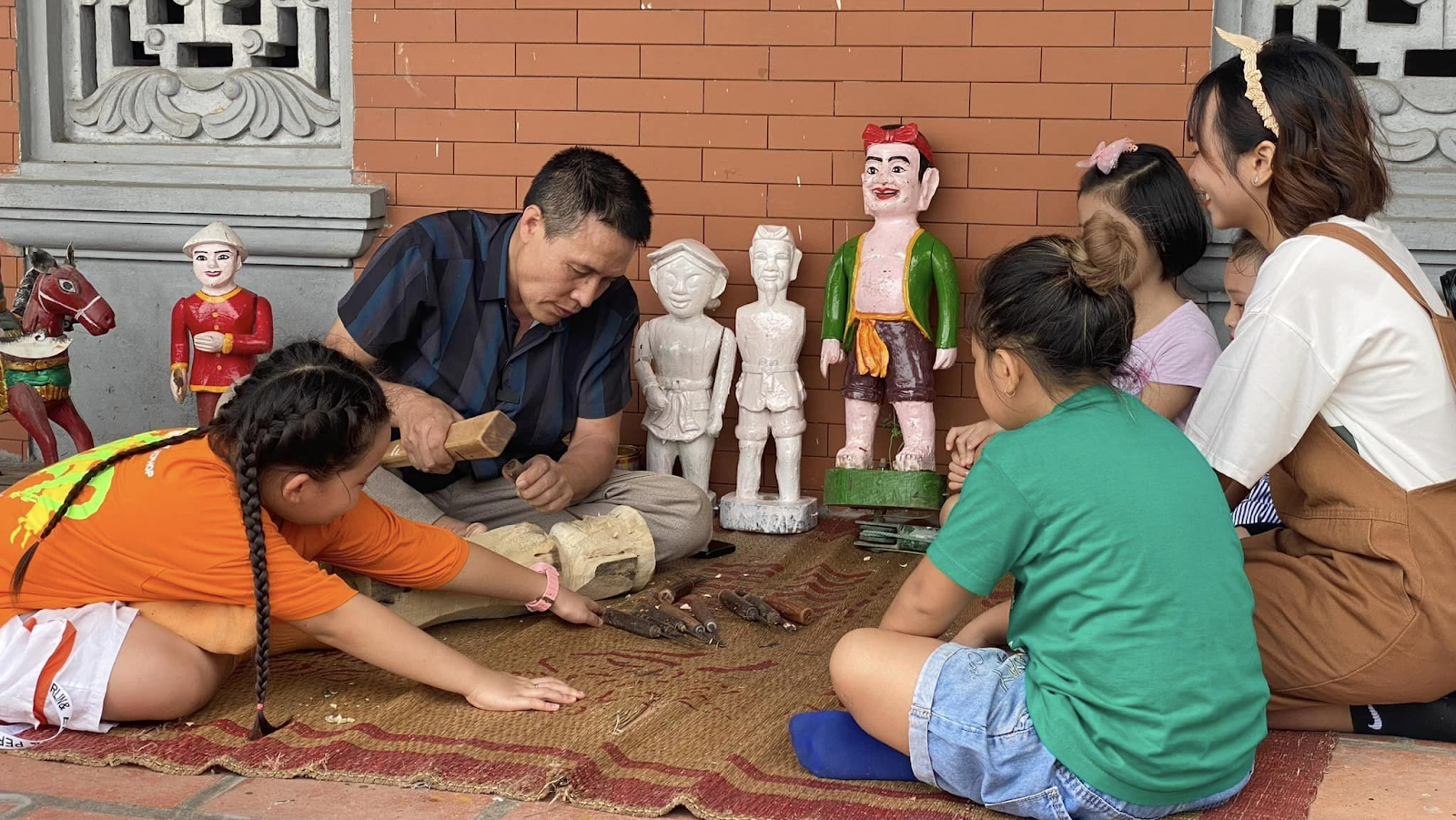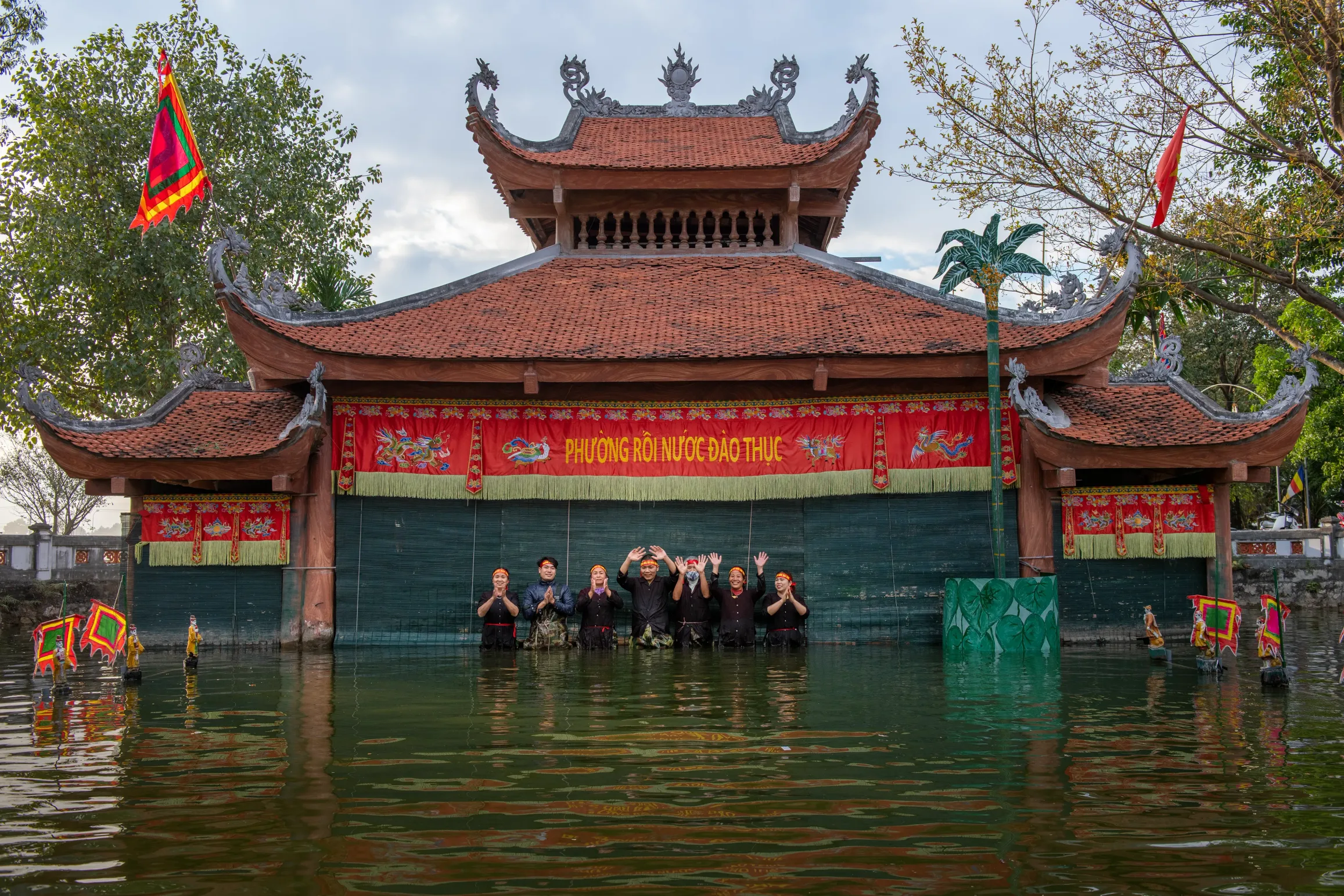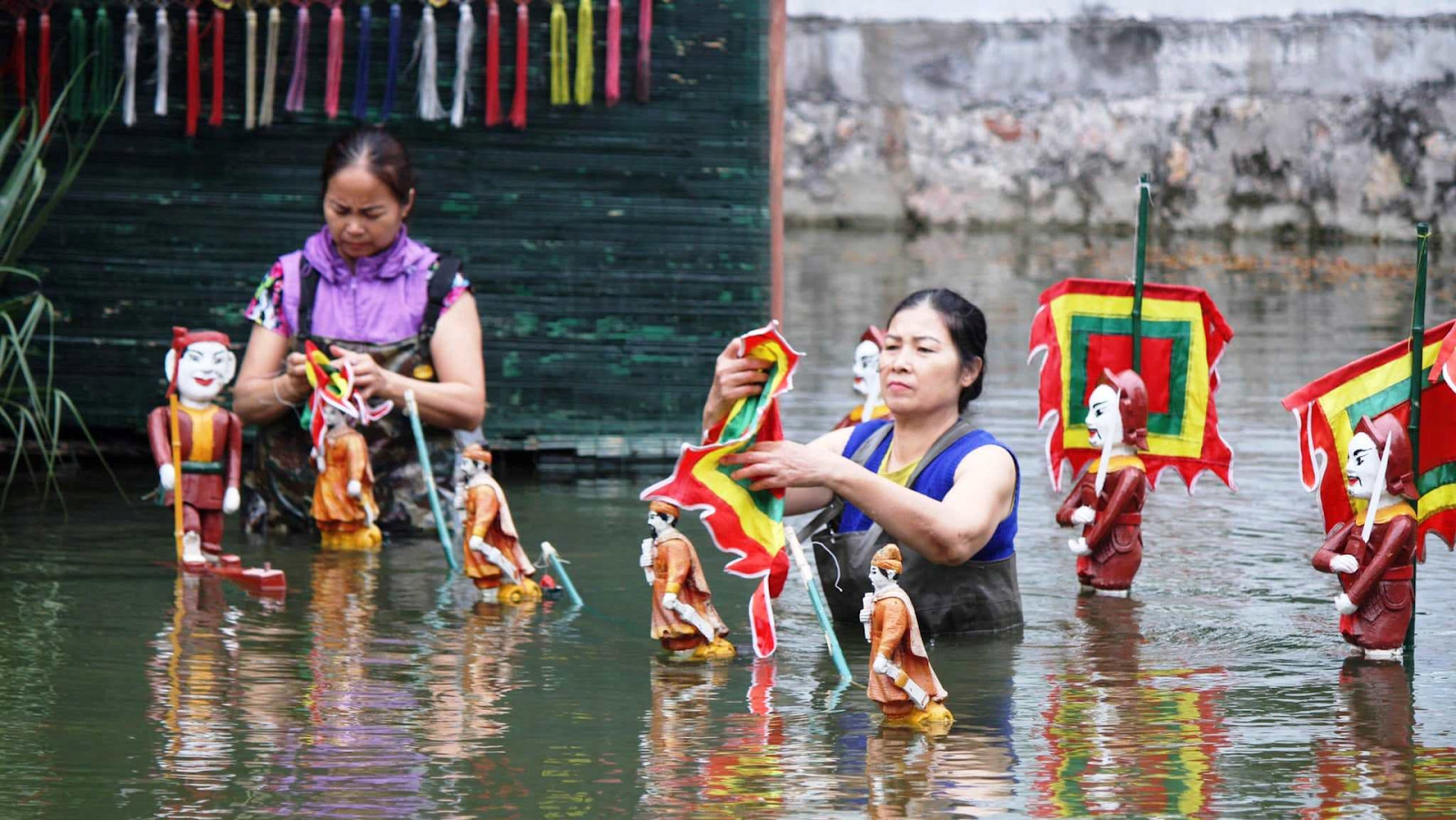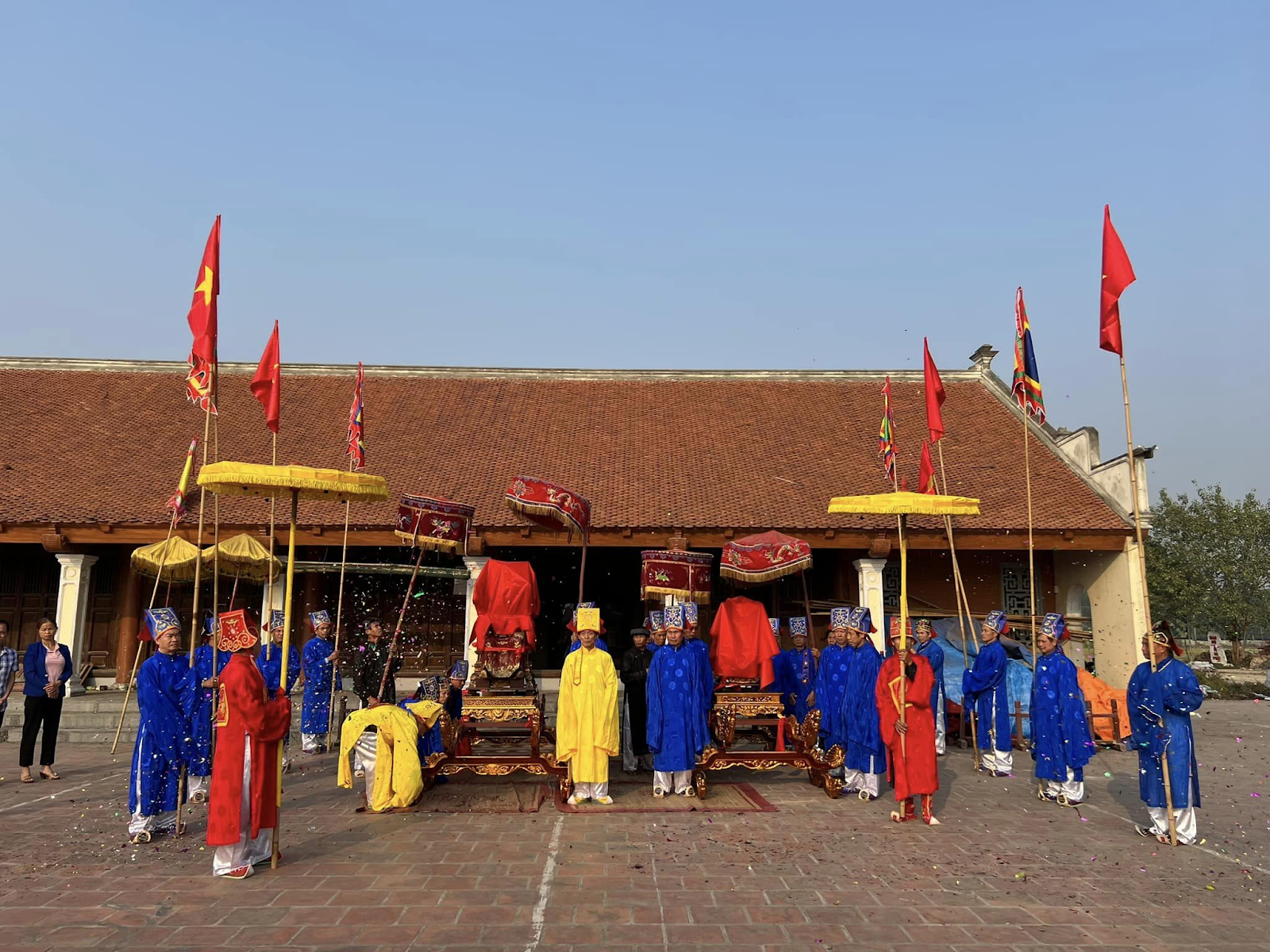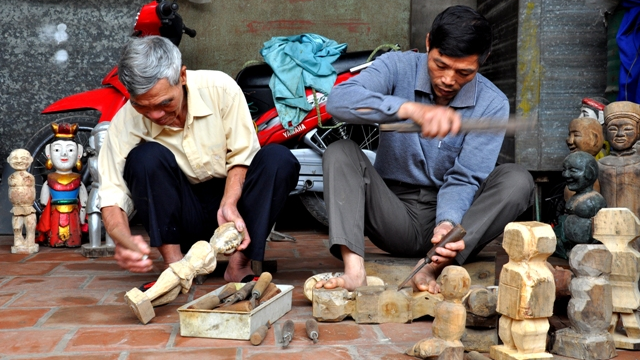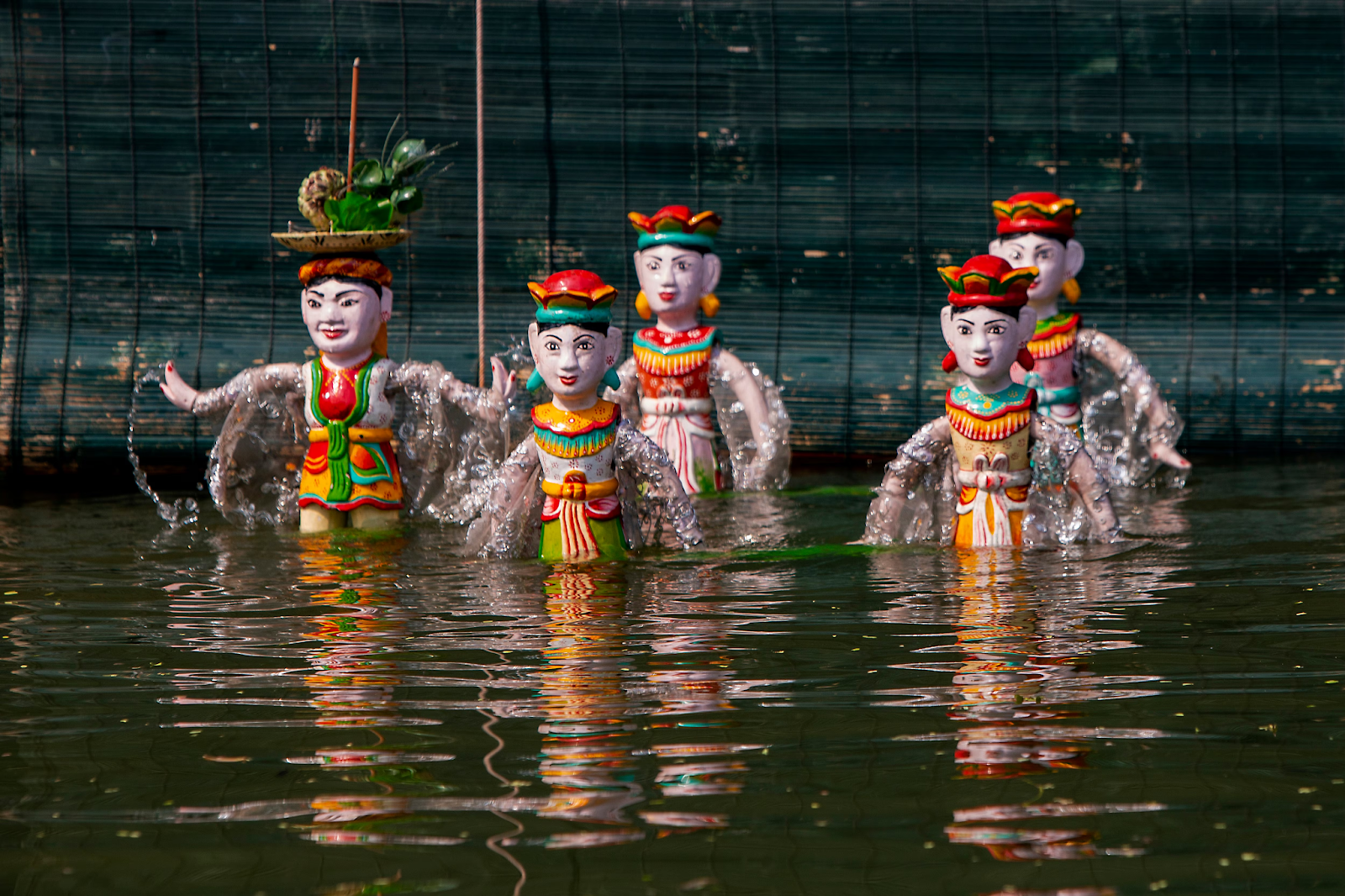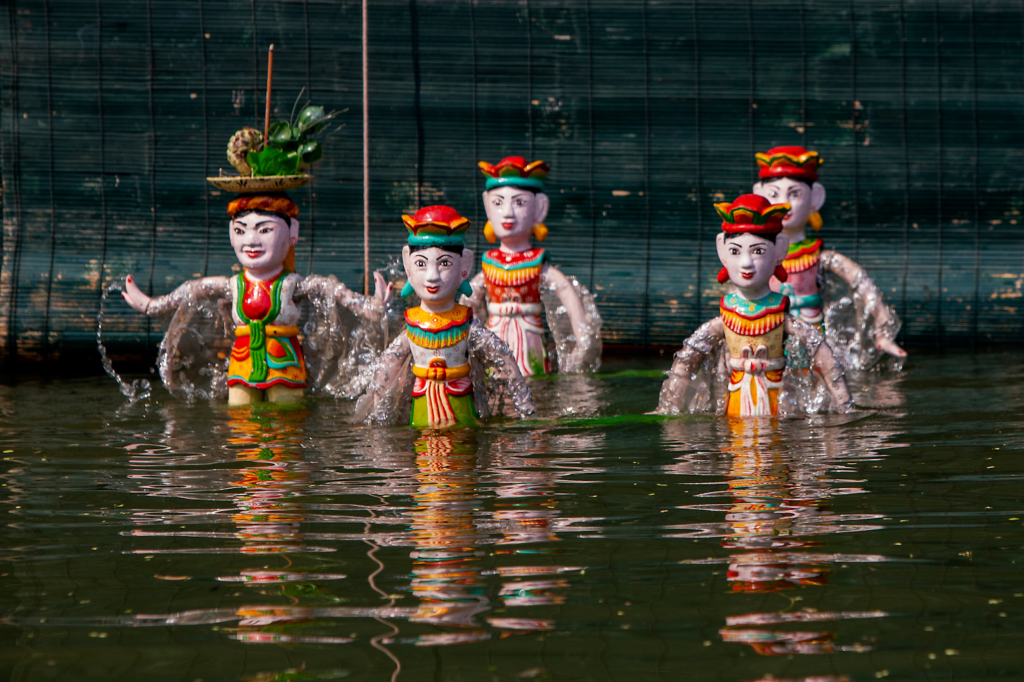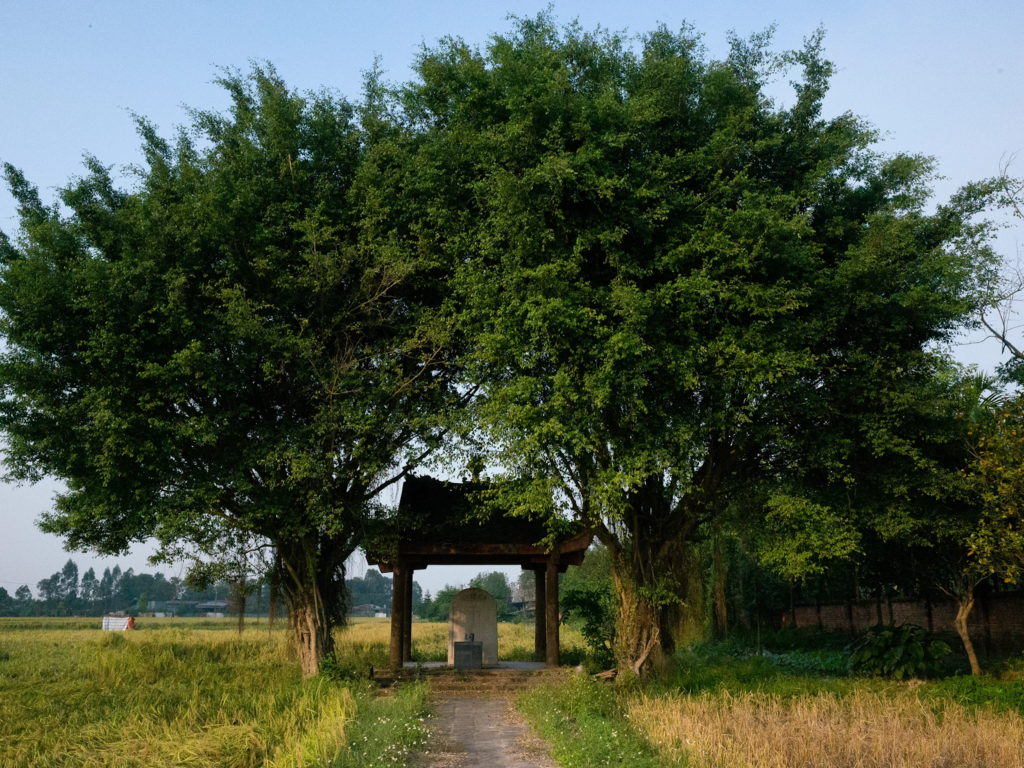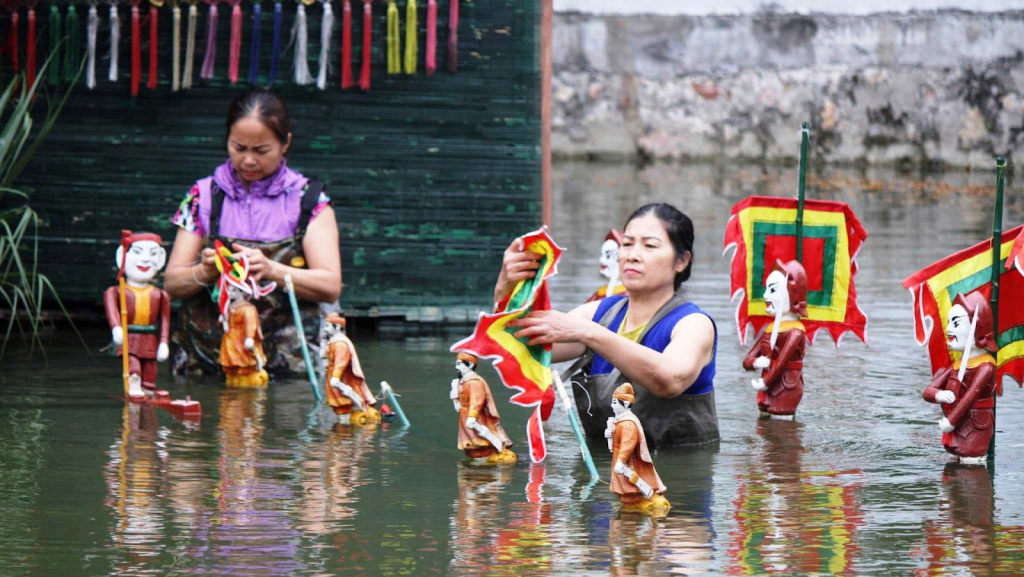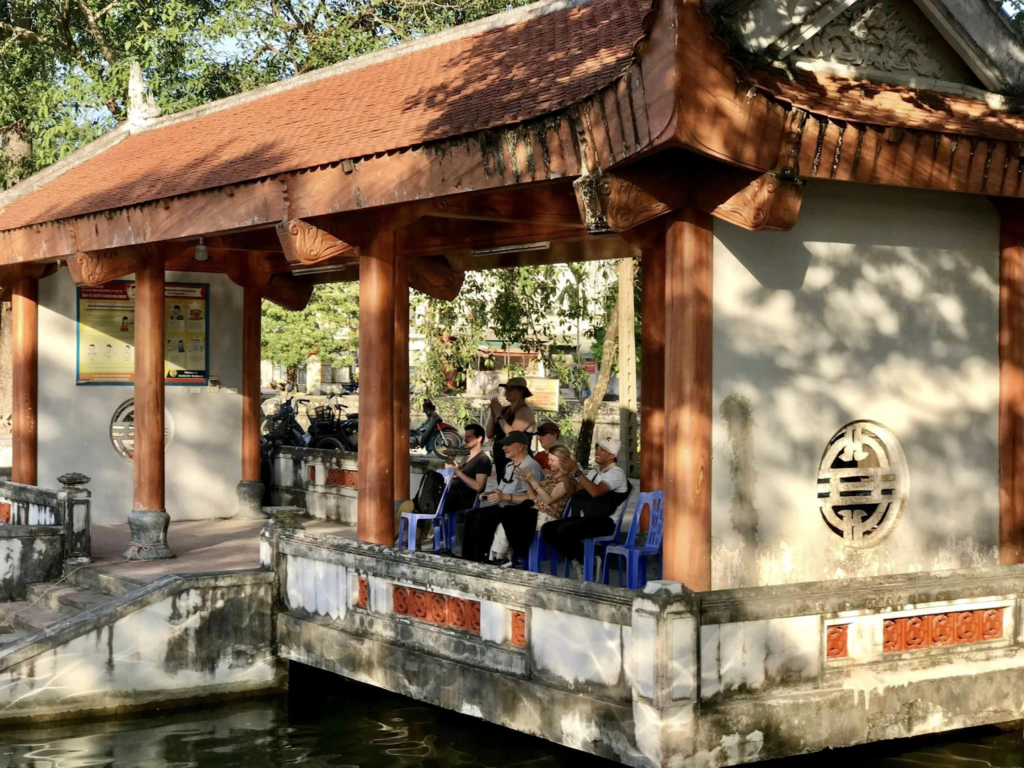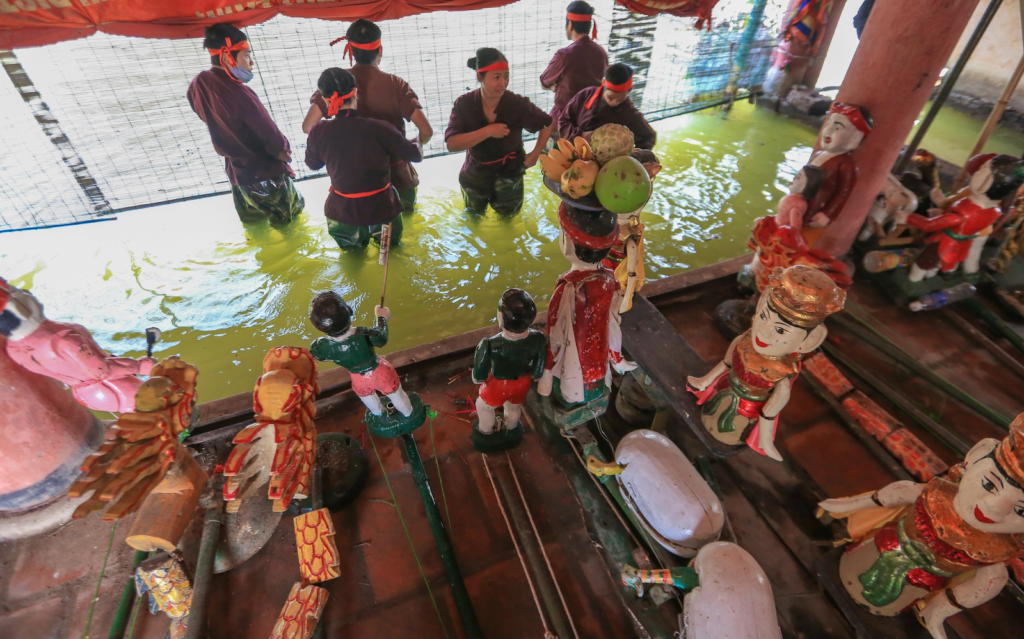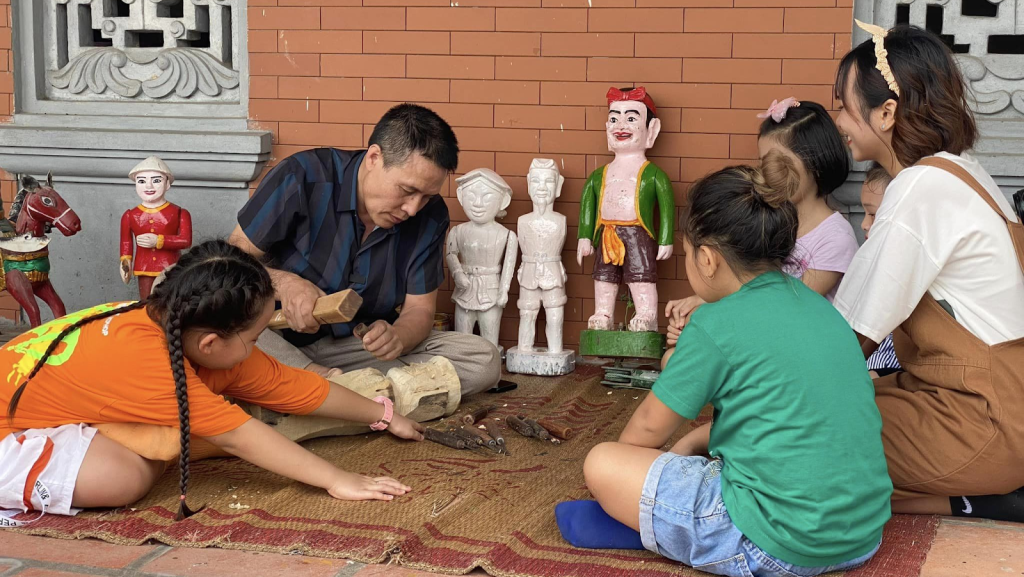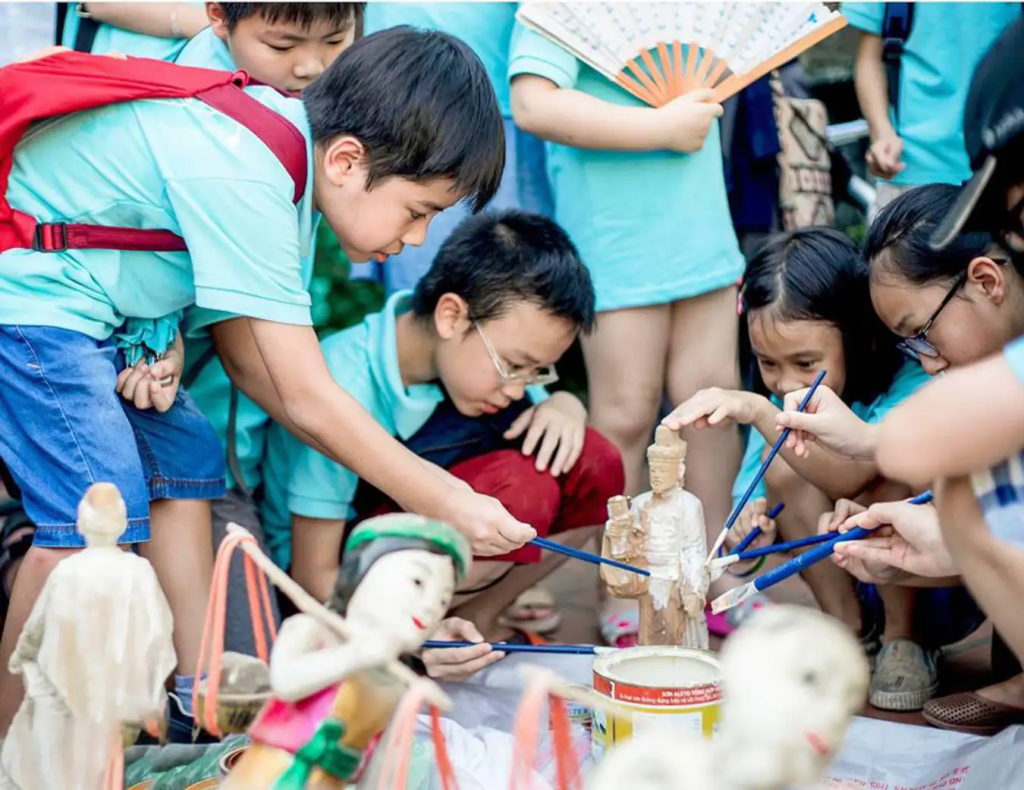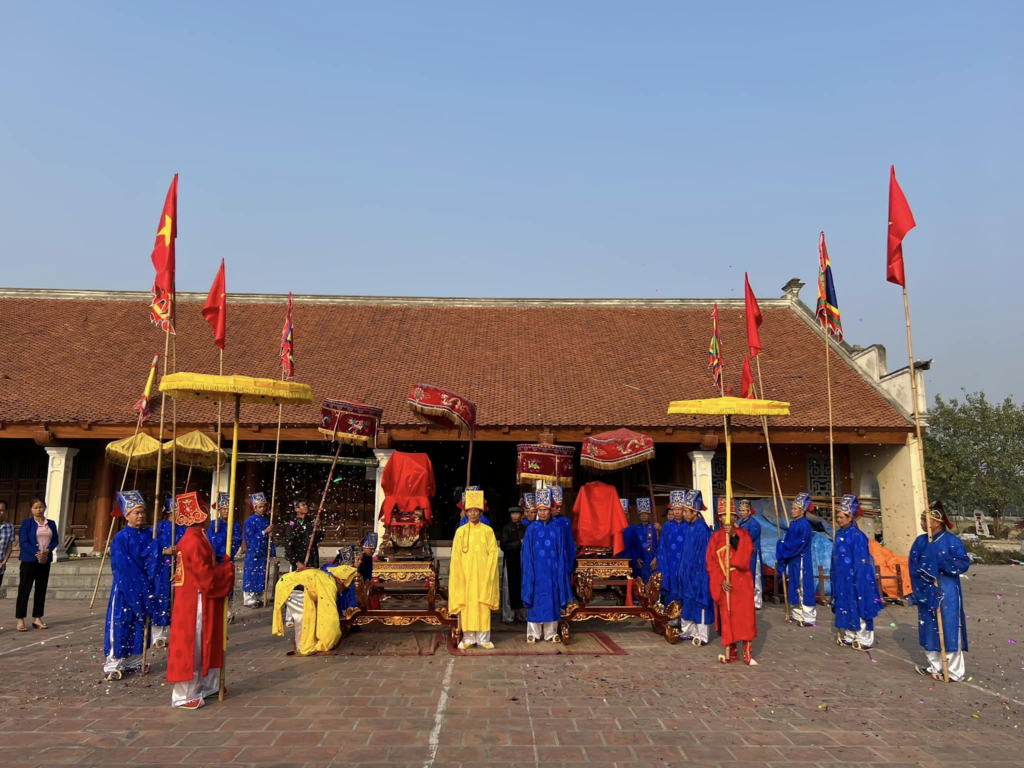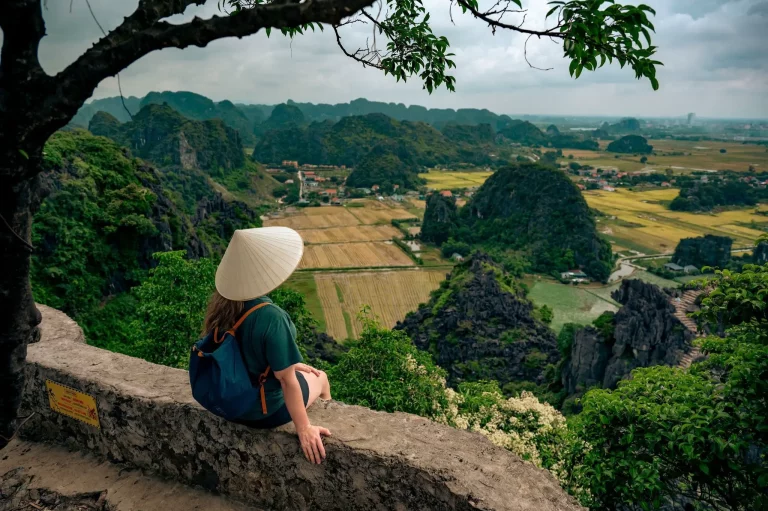Enduring vicissitudes, villagers in Dao Thuc have safeguarded the ancient water puppetry as a cherished heritage for over 300 years, becoming one of the oldest Vietnamese’ traditional craft villages.
Hanoi boasts a rich cultural history, home to centuries-old craft villages specializing in silk, pottery, and incense. Yet, on the outskirts lies Dao Thuc Water Puppet Village, a lesser-known gem working tirelessly to revive its endangered ancestral craft. Discover this unique village with Travel Sense Asia, where puppet-making and water puppetry come to life.
Where is Dao Thuc Water Puppet Village located?
The water puppet village of Dao Thuc is situated within the precincts of Thuy Lam commune, Dong Anh district, Hanoi. Positioned approximately 25 kilometers from the heart of Hanoi, it rests beyond the embankment of the Ca Lo River.
History of Dao Thuc Water Puppet Village
Dao Thuc Village gained renown for its 300-year-old water puppetry, attributed to its founder, Mr. Dao Dang Khiem (born Nguyen Dang Vinh). Nguyen held a distinguished position as a high-ranking official during the reign of Vietnamese Emperor Le Hy Tong (1735-1740). Serving as a mandarin afforded him exposure to diverse forms of puppetry presented by troupes across the nation.
Upon concluding his tenure as a mandarin, Vinh developed a profound affinity for water puppetry, dedicating himself tirelessly to imparting this art to subsequent generations. His commitment led him back to Dao Thuc, where he assumed the role of an instructor, diligently passing on the intricate techniques of water puppetry to the villagers. This invaluable cultural heritage has been meticulously preserved by the villagers and endures to the present day.
In recognition of his merits, a stone stele paying tribute to him was erected in 1735. Each year, on the 24th day of the 2nd lunar month, in commemoration of Nguyen Dang Vinh’s death anniversary, local residents partake in a ritual of lighting incense to honor him as the progenitor of Dao Thuc water puppetry.
On March 12th 2023, the Ministry of Culture, Sports, and Tourism of Vietnam formally documented the inclusion of Dao Thuc water puppetry as a national intangible cultural heritage. This recognition stands as a testament to the unwavering dedication to preserve the traditional craft by the community of Dao Thuc villagers.
Artistic values of Dao Thuc Water Puppetry
The key to Dao Thuc water puppetry lies in the buoyant fig wood material and lacquer painting of the puppets, meticulously crafted by the villagers. These puppets, measuring 30-40 cm in height, possess the unique ability to move in various directions, allowing for remarkably flexible motions unlike ones made by other craft villages.
The Dao Thuc water puppet village stands out not only for its artistic prowess but also for the resilience of its performers. They skillfully utilize the water’s movement to infuse drama, perfect illusions, and narrate compelling stories. These individuals, often simple farmers or craftsmen, demonstrate exceptional dexterity in controlling the puppets while enduring the cold waters. The manipulation of the puppet’s arms, achieved with bamboo sticks and strings, reflects the puppeteers’ decades-long journey to mastery.
Beyond the physical demands, Dao Thuc water puppetry serves as a cultural beacon, preserving and conveying the nation’s values, beliefs, and history. Each puppet represents a renowned character from Vietnamese folktales, with Chu Teu serving as a comedic host essential to the performances. Chu Teu, the storyteller, will guide you through diverse scenes depicting daily life in northern Vietnamese villages—activities like duck herding, fishing, rice planting, boat rowing, and royal parades. Some shows even incorporate moral-laden Vietnamese folktales, adding depth to the cultural tapestry woven by this ancient art form.




